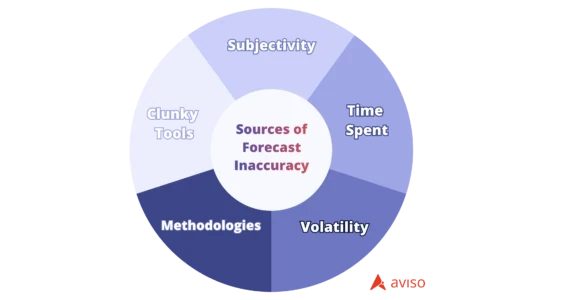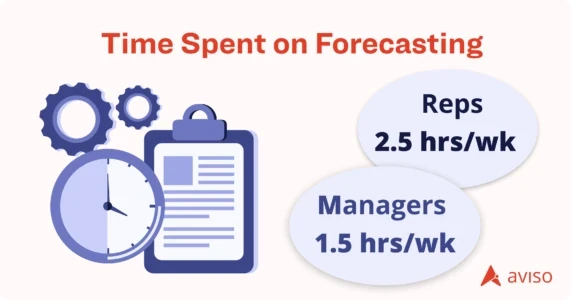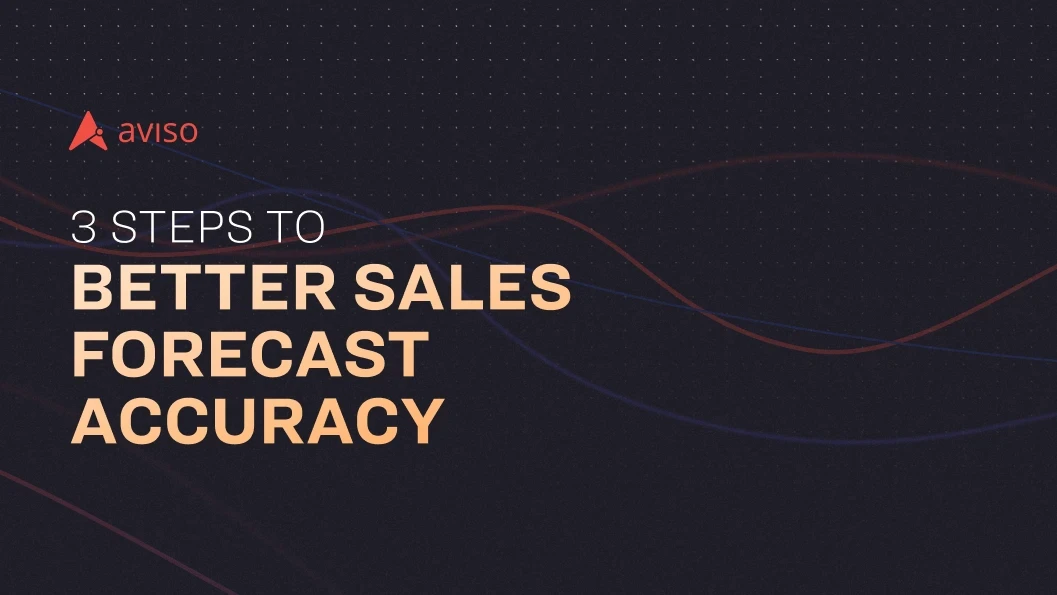Sales forecasts are the driver for many crucial decisions, from quota to spending to hiring. Yet, many sales teams and leaders still struggle to obtain sales forecasts that accurately reflect reality. This is an issue because sales forecast accuracy is essential to driving revenue. Accurate sales forecasts can offer many benefits, including:
Driving smarter decision-making.
Propelling growth.
Conveying confidence to the Board that your business is supported by a reliable forecasting machine that will scale well in the future.
Allowing opportunity management and pipeline risk assessment.
Accurate sales forecasts are linked to a 25% increase in YOY revenue performance.
Yet despite these critical factors accurate sales forecasts hold in revenue growth, according to Xant, more than 70% of sales forecasts are inaccurate. This means that the odds are that you’re doing something wrong or could be doing more. Moreover, reps spent around 2.5 hours per week forecasting, while managers spent 1.5 hours. Think of all the wasted time and misguided decisions that could be avoided. Fret not, a quick read of this article can set you on the right path.
Three ways to boost your sales forecast accuracy
1.Identify sources of forecast inaccuracy.
Common sources of inaccuracy include:

Subjectivity
Reliance on gut feelings from reps and managers can easily skew predictions from reality. Being influenced by personal feelings or opinions rather than accurately interpreting the data, is a drawback that comes from human nature and error. There are areas when subjectivity and intuition can be helpful to a sales rep but interpreting data points isn’t one of them.
Time Spent
As mentioned previously, on average reps spend 2.5 hours per week and managers 1.5 hours on forecasts. This is time spent on tedious data entry leading to inaccurate forecasts, resulting in what seems to be meaningless busywork. Allocating resources and time to the right activities is important to an efficient and effective organizational management design. It should go without saying that your team members could be more productive if their time was freed from crunching numbers on outdated systems and spreadsheets.

Volatility
The sales landscape is constantly changing, just think of the past year and the unprecedented impacts that Covid-19 had on the market. It’s difficult to accurately predict how these factors will affect your revenue stream. Software that incorporates machine learning and can analyze abundant points of data new and old quickly, is the best way to incorporate rapidly changing new changes into our predictive models.
Methodologies
Historical data is not always accurate (see above). Time-series forecasting, for example, that predicts future values based on past data, can only serve as a benchmark but does not take into account other factors.
Clunky Tools
Long story short, spreadsheets are not conducive to forecasting. Classic models of CRMs by themselves, are not cutting it anymore. As we evolve in our workspaces and with technology, our sales forecasting tools need to be able to keep up. By first identifying these sources of sales forecast inaccuracy, you can then focus on addressing the ones that need immediate attention.
2. Clean up your data.
Let’s be real: manual data entry sucks. Very few (if any) salespeople say that CRM data entry is their favorite part of the job. Here is where sources of sales forecast inaccuracy can easily slip in. This is a critical flaw because the first and foremost requirement for an accurate sales forecast is clean data. For clean data you must:
Create and enforce a standardized checklist of guidelines for data entry.
Incentivize the results.
The smarter option to reduce the issue: adopt automation.

Modern sales tools come with automated data entry systems for a smoother, less taxing experience. Automatic data cleaning technology is available on the market today, typically powered by auto-machine learning algorithms that identify information that needs to be inputted in various go-to-market systems. Additional automation tool options include automated nudge systems, which can provide timely reminders and alerts to “nudge” users to take action toward deal progression. Nudge Theory suggests that appropriately placed nudges can stimulate advantageous actions and help increase the efficiency of resource use.
3. Integrate your revenue teams.
Salespeople want to be selling. As such, keep time spent on forecasting to a minimum -- but make it as effective as possible. How to get effective and efficient forecasting:
Deploy a tool that unifies all teams (Ops, Finance, Product) on one platform, rather than juggling multiple software. With a single tool, you can better hone in on your sales forecast accuracy as well as cut down on data slippage, collaboration inefficiencies, and wasted budget. Your salespeople will appreciate this as well.
Consider getting an advanced sales analytics tool that can be customized for each position in the sales hierarchy, from reps to managers to CROs, in addition to offering an advanced deal and pipeline insight and coaching features for seamless collaboration.
After auditing your current forecasting system, you should be able to find which step would be best to first go forward with. With successful incorporation of the steps of increasing sales forecasting accuracy, you should be able to see the effectiveness directly on your revenue performance. Happy forecasting!




